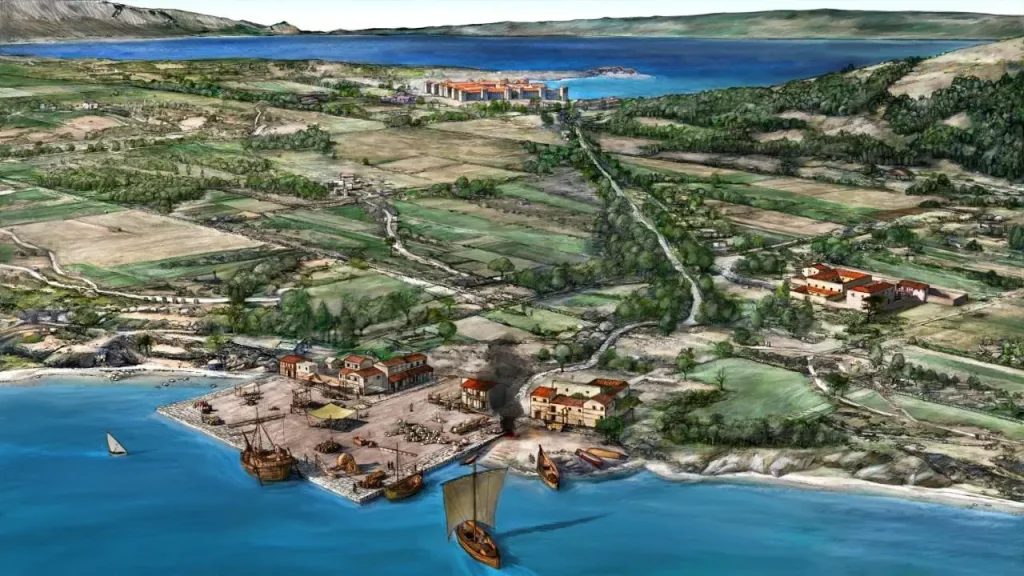The conclusion of the latest archeological campaign in the Spinut seabed on the north side of Marjan is an archaeological sensation: there, during the Roman settlement of Spalatum, in the 2nd century, an ancient port was built, which reached its peak during the construction of Diocletian’s Palace, reports Slobodna Dalmacija.
From the port, the road led to Spalatum, a settlement in the area of today’s Manuš, inscribed on the ancient road map Tabula Peutingeriani from the 2nd century. It continued to the Diocletian’s Palace construction site 200 meters away.
The underwater site in Spinut has been known since the 1950s, and in the mid-1960s, thanks to the efforts of Mladen Nikolanci, director of the Archaeological Museum in Split, and Nenad Cambi, the museum’s curator at the time, interest in Split’s underwater archaeological heritage began.
Nenad Cambi has on several occasions analyzed the Spanish and North African amphorae found in Spinut, and Irena Radić Rossi conducted archaeological research in 2006, finding that it was still an ancient port.
As part of the “Underwater Heritage of Marjan” project, run by the Museum of Croatian Archaeological Monuments in cooperation with the Diving Club “Špinut”, minor archeological excavations were carried out at the underwater archeological site in front of the “Gusar” rowing club.
“Examining the Marjan seabed during September and October this year, the attention of archaeologists was attracted by slab bricks measuring 36 cm x 36 cm, exactly the ones most used in the construction of Diocletian’s Palace, especially in the construction of arches. They are scarce in other sites in Dalmatia.
Along with other material found during the smaller soundings, it became clear that the Spinut port was used in Diocletian’s time. The large-scale construction project required the constant supply and storage of bricks, stone, wood, food, and other necessities for slaves and workers engaged in the construction of the Palace.
“In front of the Palace was the main port, while Spinut was most likely an auxiliary port,” explained Dr. Miroslav Katic, director of MHAS, adding that a good part of the construction material for the Palace had to be stored.
“Pillars were brought from Egypt, marble from Greece, and various luxury materials for furnishing buildings from other parts of the Mediterranean. The unloaded material was not immediately installed, but stored and taken as dictated by the dynamics of the works.”
Material from the port of Spinut was transported to the Palace by a 1.5-kilometer road. The reconstruction of the ancient landscape of Split, made by Dalibor Popovič, best evokes the land connection, i.e., the road that approached the Palace from the west, points out Katic.
Research has revealed the intense activity of the port in the 2nd century, and according to experts, it may have been repaired at the end of the 3rd century, when the construction of Diocletian’s Palace began and its use continued in late antiquity.
“In fact, it was created during Spalatum, a Roman settlement that preceded the Palace. It initially served farm buildings located somewhere in Spinut and reached its operational peak in Diocletian’s time,” they added.
The archaeologists concluded that the transport of a larger quantity of goods between Salona and Spalatum, i.e., the Palace, was more accessible and safer by sea than by land.
The research in Spinut, i.e., the “Marjan’s Underwater Heritage” project, is co-financed by Split-Dalmatia County in the Program for the Development, Protection, and Valorization of Maritime Heritage in Split-Dalmatia County.
As an associate and partner of the Museum of Croatian Archaeological Monuments, Marjan Park-Forest is collaborating to produce a small video that will present Marjan’s underwater heritage to the general public.
The head of archaeological research in Spinut is the curator of MHAS Miroslav Gogala, and archaeologists Miroslav Katić and Nikolina Uroda, and Dalibor Burić participated in the research. Divers Bruno Stanić, Antonija Grubišić Čabo, Stipe Boban, Jakša Babić and Paško Krančević from RK Špinut participated.
Work on examining Marjan’s underwater heritage will continue next year.
To read more about lifestyle in Croatia, follow TCN’s dedicated page.









